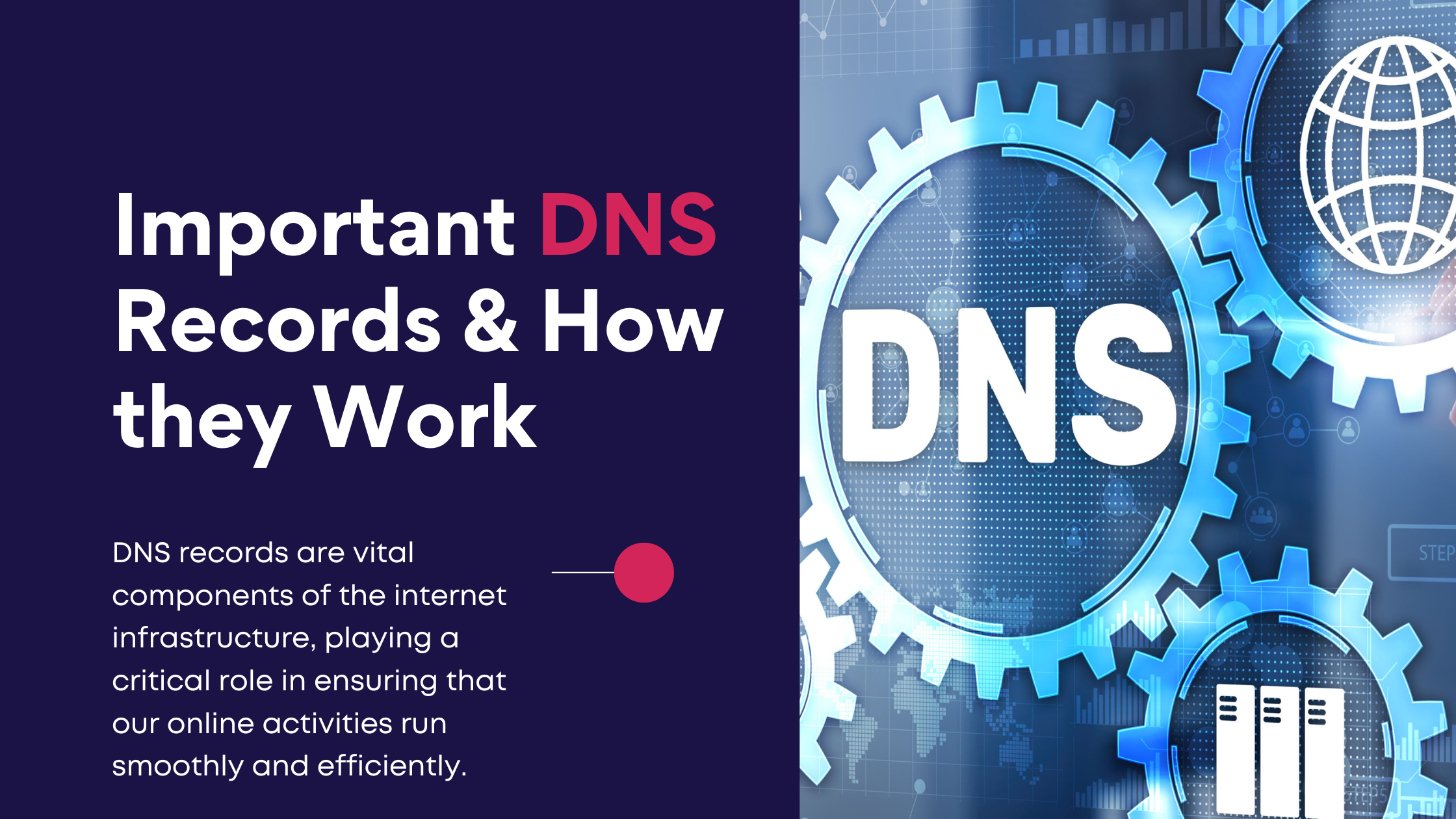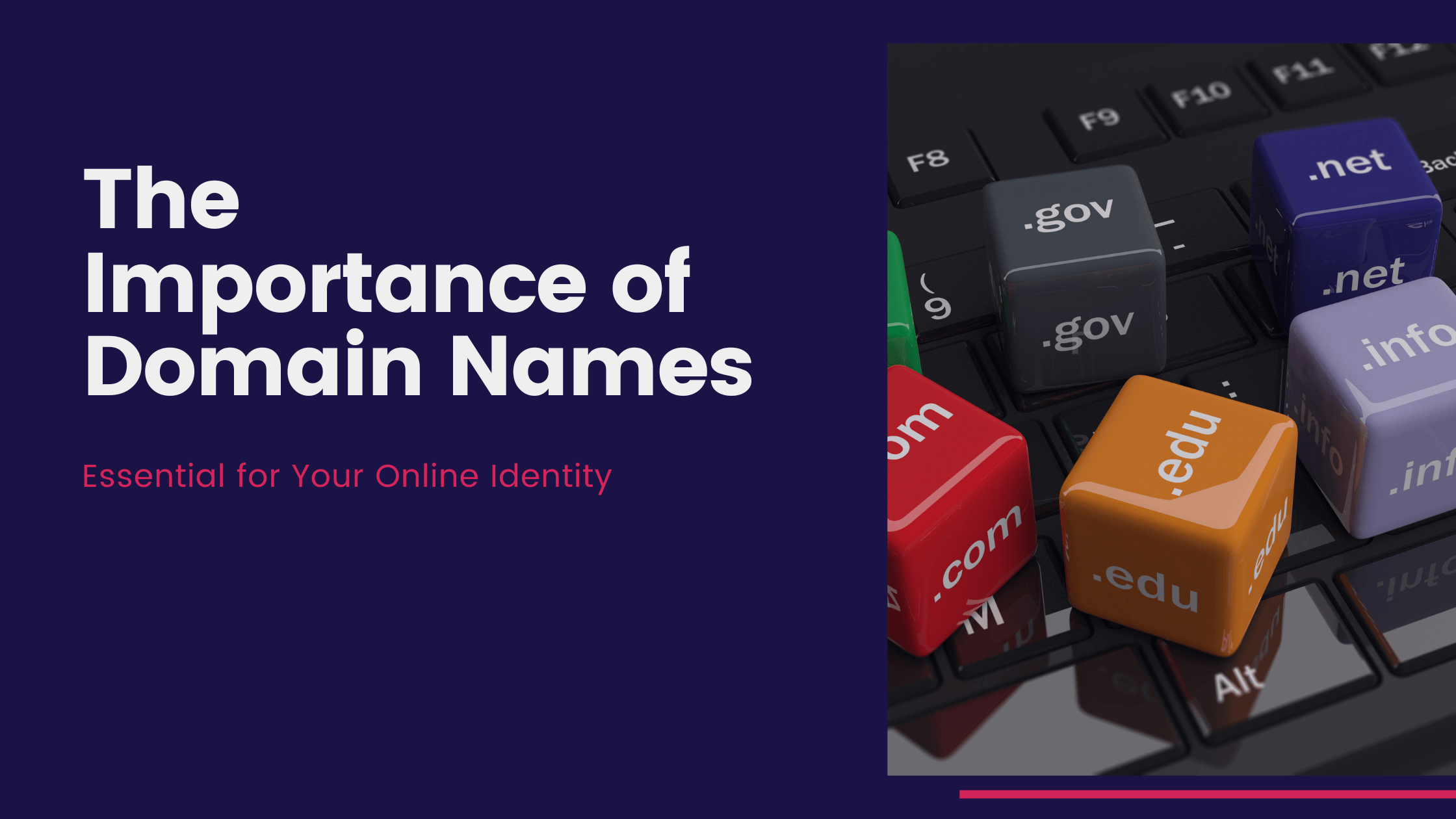- 1. Protection of User Data: Secure sites guard personal and financial details from unauthorised access.
- 2. Preserving Brand Image: Robust security prevents damage to brand trust.
- 3. Avoiding Financial Loss: Cyberattacks result in monetary loss from theft and breach-related costs.
- 4. Guaranteeing Operational Flow: A secure site avoids disruptions, ensuring consistent traffic and revenue.

Why Website Security Matters More Than Ever.
Website security stands as a cornerstone in the digital ecosystem. With every piece of software at potential risk, it’s startling to realise that business sites are especially targeted, with a staggering 30,000 websites being compromised daily on a global scale.
But website security transcends the realm of digital protection. It’s about shielding your brand’s image, ensuring customer confidence, and thwarting financial calamities. The ripple effects of a security breach can spread far, not just causing immediate fiscal damage but also undermining long-term trust and business relationships.
As our world becomes increasingly interconnected through technology, uninterrupted and safe access to one’s online business presence is vital. A robustly secured website isn’t a mere preference; it’s an essential foundation. Committed to this cause, we offer superior security protocols for all our clients. Continue reading to fully grasp the critical importance of website security and the severe repercussions for those who overlook its pivotal role.
How to Keep your Website Secure to prevent security Breach.
In the vast expanse of the digital world, a website acts as your business’s virtual storefront. Just as you’d take measures to ensure the physical security of a brick-and-mortar store, it’s equally crucial to fortify your online presence against potential threats.
Website security is an ongoing endeavour, demanding regular attention and updates. By adhering to these guidelines and staying informed about emerging threats, you’re taking significant strides in ensuring your digital domain remains a safe haven for you and your visitors.
Here are some essential steps to ensure your website remains impervious to breaches:
- Implement a Strong Password: It may seem basic, but the strength of your password plays a pivotal role in your website’s security. A combination of uppercase and lowercase letters, numbers, and special symbols can deter most hacking attempts. Remember, the more intricate your password, the tougher it is for cybercriminals to crack it. For a more in depth article on passwords and website security, read our article on the importance of strong passwords.
- Regularly Update Your Website: Cyber threats are ever-evolving, and old website versions can have vulnerabilities that hackers can exploit. By ensuring your website, plugins, and themes are up-to-date, you’re patching potential security holes, keeping your site safeguarded against known threats.
- Employ Website Security Tools for Monitoring: Proactive monitoring can be your first line of defence against cyber-attacks. Security tools can detect and alert you about any suspicious activities, allowing you to take swift action before any real harm occurs. Regularly scanning your website for malware and vulnerabilities can help nip potential threats in the bud.
- Secure with an SSL Certificate: An SSL (Secure Socket Layer) certificate encrypts the data transferred between a user’s browser and your website. This ensures any sensitive information, such as credit card details or personal data, remains confidential and safe from prying eyes. Websites with SSL also gain a trust badge in the form of a padlock symbol in the browser’s address bar, boosting user confidence.
- Two-Factor Authentication (2FA): This adds an extra layer of security by requiring users to provide two distinct forms of identification before accessing an account. Typically, this involves something they know (a password) and something they possess (a code sent to their phone).
- Regular Backups: Ensure that you regularly back up your website’s data. This way, even if there’s a security incident, you can restore your website to its previous state without losing valuable content or data.
What is a Cyber Threat?
At its core, a cyber threat represents any malevolent act aimed at accessing, altering, stealing, or disrupting digital information or systems without authorisation. These threats manifest in various forms, each with its unique methods and consequences. They can range from computer viruses, which can infect and corrupt files, to data breaches, where sensitive information is exposed to unauthorised entities. Another common form of cyber threat is the Denial of Service (DoS) attack, which overwhelms a system with excessive requests, rendering it inoperative.
To put it succinctly, imagine cyber threats as digital intruders attempting to break into a system. Their motivations can vary—some may wish to cause chaos, some aim to illicitly acquire valuable data, while others might have a vendetta against an organisation or individual. In all cases, their primary objective is to exploit vulnerabilities in digital systems for malicious purposes.
Given the increasing reliance on technology in modern society, understanding and mitigating these threats has never been more crucial. They not only jeopardise the smooth functioning of systems but can also lead to significant financial, reputational, and personal losses.
The Implications and Reach of Cyberattacks.
With the rapid evolution of technology, cyber threats have grown more intricate, making the defence of digital domains increasingly vital. Numerous websites harbour sensitive data, and in the absence of a diligent security approach, they stand vulnerable to malicious infiltrations.
For countless businesses, cybersecurity has emerged as a pressing concern, more so now than ever in our digital age. It’s a disconcerting reality that websites face hacking attempts daily. The ramifications of these breaches can range from severe business disruptions to potentially catastrophic outcomes. As aptly noted by IBM’s chairman, “Cybercrime stands as the foremost threat to every global enterprise.“
The world of cybercrime is vast, lucrative, and unrelenting. Cybercriminals are perpetually on the hunt for vulnerabilities to exploit in digital platforms. A successful attack on your website can have grave consequences, tarnishing your brand’s reputation and trustworthiness. Predominantly, these cyber intrusions employ malware with capabilities to:
- Steal data or Traffic
- Redirect your site to another site
- Add malware such as pornographic material or other damaging material
- Redirect payment profiles
- Crash your site or slow it down to the point that it is unusable
- Top Security Threats for Your Website
- Security threats for websites are continuously evolving, however, there are a number of threats that consistently show up at the top of website security threat lists.
Persistent Security Threats Targeting Websites.
While the landscape of web security threats is ever-changing, certain challenges persistently rank high in terms of prevalence and potential harm.
Phishing
Phishing involves cybercriminals deploying deceptive emails as their primary tool. These misleading messages are crafted to appear legitimate, often mimicking communications from reputable entities like banks or popular online services like PayPal and Apple. The objective is to dupe recipients into taking a desired action, such as sharing sensitive information. Originating in the mid-1990s, phishing stands as one of the most enduring cyberattack methodologies.
Ransomware or Malware
Ransomware acts as a digital hostage-taker. Once it infiltrates your system or website, it restricts access, holding your data captive until a ransom is paid. On the broader spectrum of malicious software, or malware, there are various types including viruses and trojans. These malevolent programs can compromise the integrity of your computer or website. For instance, malware might alter your website’s appearance, enabling wrongdoers to supplant your content with their malicious messages.
SQL Injection
SQL injection is a prevalent website security flaw that poses significant risks. It allows cyber attackers to tamper with the database queries initiated by an application. By exploiting this vulnerability, attackers can potentially view sensitive information, modify or delete data, and even execute administrative operations on the database. The root cause of such vulnerabilities usually stems from applications that don’t adequately validate or sanitize user inputs, allowing attackers to introduce malicious SQL code. Defending against SQL injection is vital, as a successful attack can lead not just to data breaches but also to a loss of data integrity and trust.
Code Injection
Code injection, in its essence, is akin to a digital Trojan horse. Attackers insert malicious code snippets into a website, often through input fields or vulnerable scripts. Once this rogue code becomes part of the site, it can be executed, granting attackers a range of malicious capabilities. For instance, they could steal user data, deface the website, or spread malware to its visitors. The danger of code injection lies in its stealthy nature—the injected code can often operate undetected, causing harm over extended periods. Ensuring input validation, employing secure coding practices, and regular security audits are essential steps to mitigate the risks associated with code injection.
Understanding the Mechanics of Website Attacks.
Websites face threats from various avenues, but one of the primary modes of attack leverages automated tools or bots. The allure of using these automated assaults lies in their efficiency; with minimal input, hackers can simultaneously target multiple websites, exponentially increasing their chances of finding a vulnerable site.
Bots for website attacks.
In many cases, bot-initiated attacks are indiscriminate, scanning a vast array of websites without a specific target in mind. However, if a website or its owner is linked to contentious or high-profile activities, it might become a deliberate target for more orchestrated bot attacks. These digital intruders, often referred to as ‘web crawlers’ or ‘scrapers,’ scour the internet searching for potential weak spots. Common vulnerabilities they exploit include outdated Content Management Systems (CMS) like WordPress or extensions and plugins that haven’t been updated. When they identify such vulnerabilities, they can initiate a range of malicious activities, from data theft to site defacement.
It’s essential for website owners to remain vigilant and proactive, regularly updating their platforms and ensuring they employ the latest security measures. In doing so, they can significantly reduce the risk of falling prey to these automated threats.
Cybercriminals and Their Motives.
Often referred to as “black-hat hackers,” cybercriminals exploit computer systems and networks for personal gain, driven by various motives ranging from financial profit to sheer mischief. Leveraging their deep technical expertise, they identify vulnerabilities or create malicious software to breach secure environments. Once inside, they might sabotage the system, alter data, or exfiltrate sensitive information for later misuse.
The Many Faces of Hackers.
Understanding the diverse profiles and motivations of hackers is the first step in crafting a robust cybersecurity strategy. By being aware of potential threats and their origins, businesses can better defend their digital assets.
Inside Threats: Surprisingly, threats often originate from within an organisation. Disgruntled employees, bearing grudges or looking for revenge, can pose significant security risks. Their familiarity with the company’s infrastructure makes their attacks more potent and potentially damaging. It’s crucial for organisations to adopt a policy of revoking access privileges and changing passwords promptly when an employee departs, ensuring they can no longer access critical systems.
Hacktivists: Beyond the typical image of a hacker, there’s a subset known as “hacktivists.” These individuals or groups, driven by ideological beliefs or competitive motives, engage in cyberattacks to make a statement or gain an edge in their field. Unlike black-hat hackers, who are primarily motivated by personal gain, hacktivists often believe they’re championing a cause, even if it means skirting or breaking the law. They might target rival businesses, governmental agencies, or other entities they view as adversaries.
Recognising the Red Flags:Signs of Malware and Suspicious Activity
As we increasingly turn to the internet for information, shopping, and communication, ensuring the safety of our online interactions has become paramount. With cyber threats lurking around every corner, it’s essential to recognise the indicators of a secure website before sharing personal or financial information.
There are a few major signs to look for when determining whether a website is safe and secure.
- HTTPS in the URL: Always check if the website URL begins with “https://” rather than just “http://”. The ‘S’ in HTTPS stands for ‘Secure’ and indicates that the website uses an SSL (Secure Socket Layer) certificate, ensuring that the data transferred between the website and its visitors is encrypted and secure.
- Padlock Icon: Before the website URL in the address bar, you might notice a padlock icon. This symbol indicates that the site uses a secure connection. If the padlock is broken or displays an alert symbol, it might be a sign that the site’s security certificate is not trusted.
- Privacy Policy: A legitimate and secure website will often have a clear privacy policy that explains how your personal data is used, stored, and protected. This indicates transparency and a commitment to data protection. These privacy policies are required by law in Australia and it is a good indication that the website owner cares about complying with the laws to ensure their website and visitors are safe.
- Trusted Certificate Authority: Ensure that the website’s SSL certificate is issued by a reputable certificate authority (CA). You can often view the certificate details by clicking on the padlock icon in the address bar.
- Contact Information: Reliable websites usually have accessible contact information, such as a physical address, phone number, or a contact form. If such details are missing or seem dubious, proceed with caution.
- Look for Trust Seals: Many websites display trust seals or badges from cybersecurity companies, indicating that they’ve passed certain security tests or audits. However, ensure these seals are genuine and not just pasted images.
- Suspicious Pop-ups and Redirects: Be wary of websites that bombard you with pop-ups, especially those asking for personal or financial information. Similarly, if a site keeps redirecting you to unrelated pages, it may be compromised.
- Updated Content and Design: A regularly updated website with a modern design often indicates an active webmaster who might prioritise security.
- Check Reviews and Reputation: Look for reviews or feedback about the website on other platforms. A website with a good reputation is less likely to be malicious.
- Browser Warnings: Modern web browsers have built-in security checks. If you’re trying to visit a website and your browser displays a warning about the site’s security, heed that warning.
- Avoid Sites with Poor Grammar and Spelling: Websites riddled with spelling and grammatical errors may be unprofessional at best and potential phishing sites at worst.
Prioritising The Importance of Website Security.
As we have just learnt, the security of a website is paramount in today’s digital world. At Central Coast Websites, our commitment to safeguarding your online presence is unwavering. Our holistic security approach encompasses a suite of protective measures, ensuring your website remains fortified against potential threats. From integrating SSL security certificates and deploying plugins to counter brute force attacks, to diligently updating WordPress and its associated plugins, we leave no stone unturned. Our server configurations are tailored to filter out suspicious activities, and we routinely back up our digital environments for added peace of mind.
If you have an older website and have concerns about its security, don’t hesitate to reach out to Central Coast Websites. Our dedicated team stands ready to assist, offering solutions tailored to your needs. Together, we can craft a secure, modern website, ensuring your brand’s integrity and reputation remain uncompromised.





